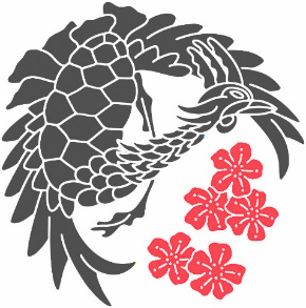(D) 1935 Tea House and Garden
The 1935 Tea Garden consisted of inner and outer gardens, connected by a pathway that led to the Rinkōtei Tea House, which was made in Japan for the Japanese exhibit at the 1933 Century of Progress.
Roji (露地), lit. 'dewy ground', is the Japanese term used for the garden through which one passes to the tea house (chashitsu) for the tea ceremony (cha-no-yu). The roji generally cultivates an air of simplicity.
The 1935 Roji consisted of three areas: (1) The outer garden (soto-roji) stops before the (2) waiting place (machiai). Here, the tea ceremony host would greet visitors and invite them to walk (3) the inner garden (uchi-roji) to the tea house | Image: Courtesy of Robert W. Karr, Jr. and umiimu.com
AREA 1 - The Outer Garden (soto-roji)
Area 2 - Waiting Area (machiai)
Middle Gate (chū-mon) between the outer garden and machiai and inner garden. Members of the Consulate of Japan with George T. Donohue, President, South Park Commissioners & First Superintendent, Chicago Park District. Donohue is standing in back to the right. To the left is Chicago Park District’s architect, E. V. Buchsbaum, who along with landscape architect, Robert E. Moore, Jr. to draw up detailed plans for the Phoenix Pavilion restoration and new Japanese gardens. | Image: Courtesy of Robert W. Karr, Jr. and umiimu.com





